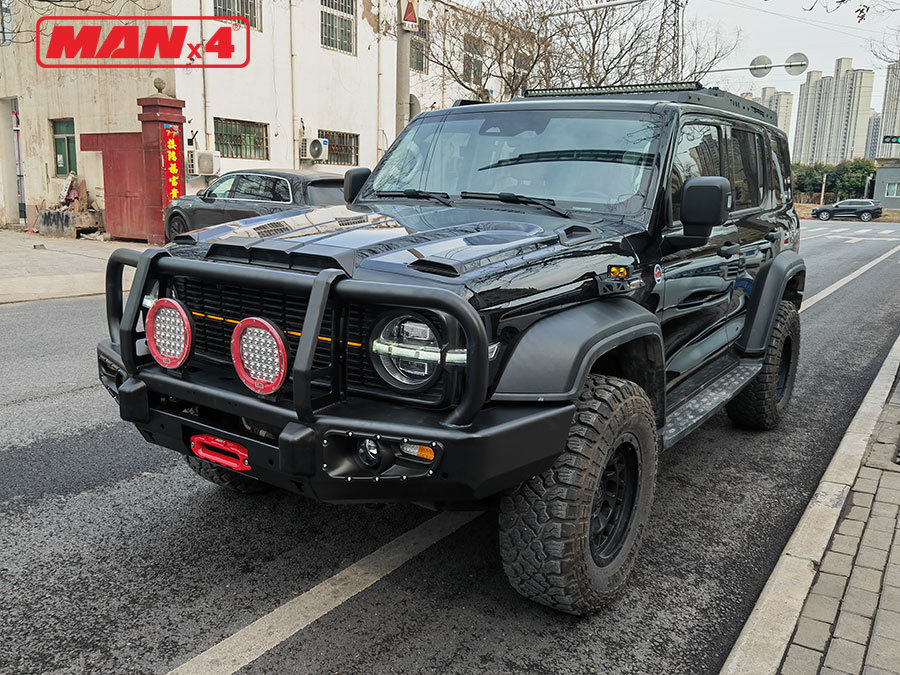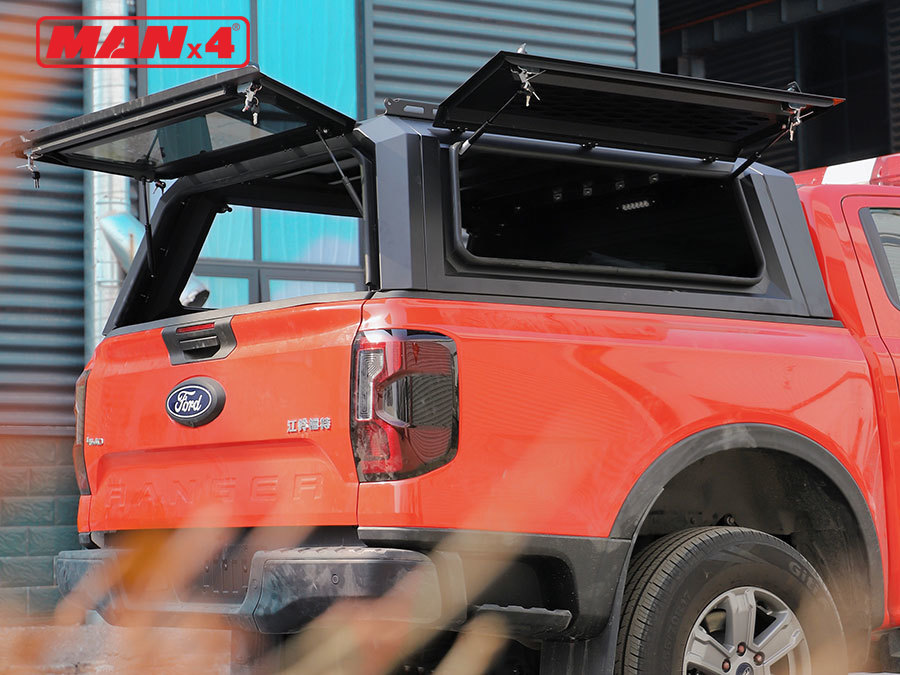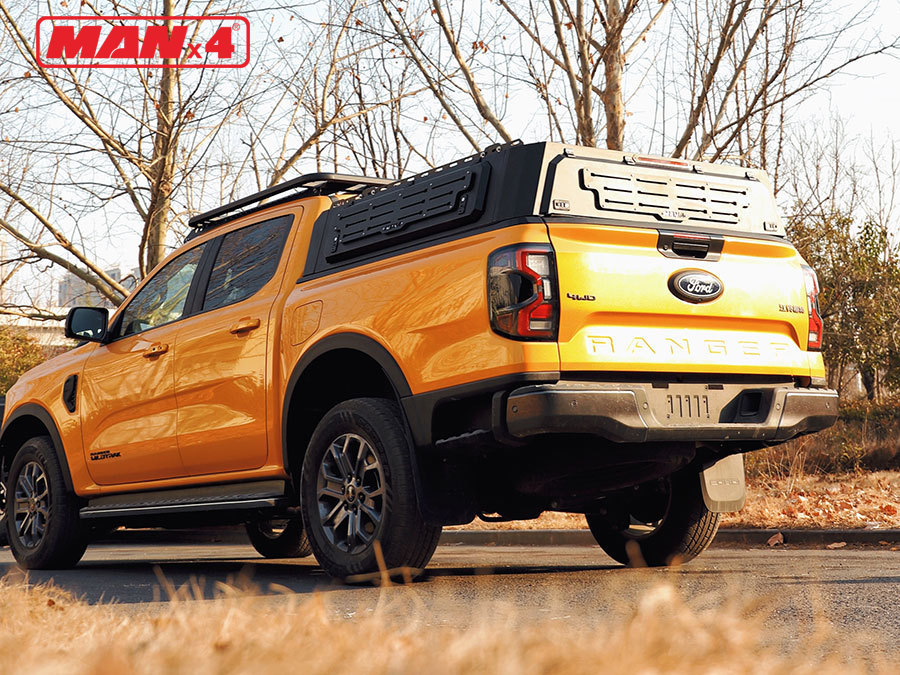Detailed Explanation of Car Parts Front Bumper Series
Release time:2025-09-10
As the core protective component at the front end of a vehicle, the front bumper (referred to as "front bar") is not only the defense line of the vehicle's passive safety system but also a key carrier of the vehicle's design aesthetics and aerodynamics. From economical sedans to luxury SUVs, the materials, structures, and functions of front bumpers vary significantly, and their technological evolution reflects the automotive industry's ongoing pursuit of environmental protection and intelligence.
1. Structural Analysis: Sandwich Protection System
Modern automotive front bumpers generally adopt a three-layer composite structure of "outer panel + cushioning layer + crossbeam bracket," forming an energy absorption chain of "soft-hard-rigid."
The outer panel is the visual main body of the front bumper, usually made of polypropylene (PP) base material with 20% talc (T20) or ethylene propylene diene monomer rubber (EPDM), with thickness controlled between 2.5-3.5mm. Taking the Volkswagen Golf as an example, its front bumper outer panel achieves a hollow structure through gas-assisted injection molding, reducing weight by 15% while ensuring strength. The cushioning layer uses expanded polypropylene (EPP) or honeycomb polyurethane, which can absorb 60% of impact energy in a 15 km/h collision, effectively protecting the radiator and headlight assemblies.
The crossbeam bracket, as the rigid core, is stamped from 1.5mm cold-rolled steel plate into a U-shaped groove structure and connected to the vehicle frame longitudinal beam by bolts. The aluminum alloy crossbeam of the Audi A6L uses 6061-T6 alloy, reducing weight by 40% while maintaining the same strength. Combined with a multi-stage collapse guide groove design, it deforms along a predetermined path during high-speed collisions, reducing intrusion into the passenger cabin.
2. Material Evolution: The Revolution from Metal to Composite Materials
The evolution history of front bumper materials essentially reflects the automotive industry's balancing act between lightweighting and cost control.
Before the 1980s, automotive front bumpers were mostly carbon steel stamped parts, such as the U-shaped channel steel front bumper of the Lada 2105. Although it could withstand low-speed collisions, the single-piece weight of 12kg severely limited fuel economy. With breakthroughs in plastic processing technology, polypropylene-based composite materials gradually became mainstream. The front bumper outer panel of the Toyota Corolla uses a PP+EPDM-T20 formula, maintaining dimensional stability within a temperature range of -40°C to 80°C. Combined with internal parting mold technology, the parting line is hidden, controlling the appearance seam tolerance within 0.3mm.
The high-end market has initiated a materials innovation race. The front bumper of the Porsche Cayenne Turbo uses carbon fiber reinforced polymer (CFRP), increasing interlayer shear strength to 350MPa through vacuum infusion technology. While reducing weight by 50%, its impact resistance is three times that of steel parts. The Mercedes-Benz S-Class introduces thermoplastic composite materials (GMT) with a glass fiber content of 45%, enabling rapid molding in one minute and significantly shortening production cycles.
3. Functional Expansion: From Passive Protection to Active Protection
In the wave of intelligence, the front bumper is evolving from a single protective component to a multifunctional sensor integration platform.
The Tesla Model 3 embeds 12 ultrasonic radars and 3 forward cameras inside the front bumper, forming the environmental perception of the Autopilot 3.0 system. Its front bumper grille uses laser welding to fix the millimeter-wave radar bracket, ensuring that under extreme temperatures from -30°C to +85°C, the radar beam pointing accuracy deviation is less than 0.1°. The Volvo XC90 innovatively integrates a pedestrian protection airbag inside the front bumper. When the collision sensor detects contact with a pedestrian, the airbag deploys within 50 milliseconds, covering from the A-pillar to the lower edge of the front windshield, reducing head injury by 50%.
Aerodynamic optimization has become a new battlefield. The front bumper of the BYD Han EV uses an active air intake grille, driven by a motor to open and close louver blades within 0.3 seconds. It closes during low-temperature preheating to improve thermal efficiency and opens during high-speed cruising to reduce drag. Its front lip diffuser is optimized through CFD simulation to smoothly transition airflow from the front to the chassis. Combined with a closed wheel arch design, the drag coefficient is reduced to 0.233Cd.
4. Manufacturing Process: The Battle Between Precision Molds and Green Production
Front bumper production involves three core processes: injection molding, painting, and assembly. Their precision directly affects the vehicle's overall NVH performance.
In the injection molding stage, five-axis linkage high-speed machines can achieve one-piece molding of ultra-large front bumpers up to 2000mm, with injection speeds reaching 800mm/s and clamping forces exceeding 6000 tons. The front bumper mold of the Volkswagen MQB platform uses nitrogen-assisted injection molding technology, precisely controlling holding pressure to reduce product shrinkage from 0.8% to 0.3%. The painting process is transitioning to water-based paints. The BMW iX3 front bumper uses a two-component water-based primer, reducing VOC emissions by 78% compared to solvent-based coatings. Combined with robotic electrostatic rotary cup spraying, the paint film thickness uniformity reaches ±2μm.
The repair market has spawned new solutions. 3M's thermoplastic front bumper repair system uses infrared heating to locally soften PP material. With a special suction cup, dents smaller than 50mm in diameter can be repaired within 10 minutes, costing only 30% of replacement parts. Meanwhile, Mercedes-Benz 4S stores are equipped with AR repair guidance systems that project front bumper disassembly steps onto the actual vehicle through HoloLens glasses, improving operational efficiency by 40%.
5. Future Trends: Material Revolution and Functional Integration
With the deepening of electrification and intelligence, front bumpers will take on more diverse roles.
Front bumpers of solid-state battery vehicles need to integrate wireless charging receiving modules, and their non-metallic materials must meet electromagnetic shielding requirements for 50kW power transmission. The front bumper of the Toyota Mirai fuel cell vehicle is equipped with a hydrogen leak sensor that can detect a 2% concentration leak within 0.1 seconds and trigger an alarm. The front bumper of the Volkswagen ID. series will be equipped with V2X communication modules that interact in real time with traffic signals to optimize adaptive cruise strategies.





